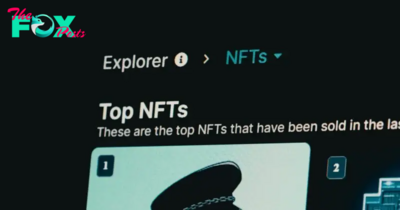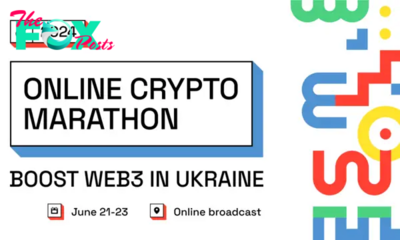Cryptocurrency
Bitcoin Big Blockers ‘Were Right,’ Says Ethereum Founder
In a blog post, Ethereum founder Vitalik Buterin revisited the pivotal Bitcoin block size debate that starkly divided the Bitcoin community mainly from 2015 to 2017. Engaging deeply with two authoritative books, Buterin re-examined the historical nuances of this schism from his unique perspective as both a participant and a thought leader in the crypto space.
Buterin’s blog entry, entitled “Some reflections on the Bitcoin block size war,” unpacks the contrasting narratives provided by Jonathan Bier’s The Blocksize War and Roger Ver and Steve Patterson’s Hijacking Bitcoin. These books represent the pro-small-block and pro-big-block viewpoints, respectively, offering a lens into the ideological and technical divides that characterized the debate.
Bitcoin Small Blockers Vs. Big Blockers
Buterin described the small blockers’ perspective primarily through insights derived from Bier’s book. This faction, concerned with maintaining the decentralized, user-accessible nature of Bitcoin, argued against large increases in block size. They feared that larger blocks would necessitate more substantial hardware requirements for node operators, potentially centralizing the network to those who could afford such setups.
A key quote highlighted by Buterin encapsulates this concern: “[If the block size were much bigger], you would need a big data center to run a node, and you won’t be able to do it anonymously.” Moreover, small blockers were portrayed by Buterin as being deeply vested in the governance model of Bitcoin.
They preferred infrequent, consensus-driven changes to avoid the risks of centralized control and manipulation by a limited number of stakeholders. The New York Agreement of 2017, which sought to resolve the block size dispute through a compromise among major exchanges, miners, and other stakeholders, was cited as anathema to small blockers’ governance ideals, which favored rule by the general user base over a corporate consortium.
Conversely, the narrative of big blockers, as detailed in Ver and Patterson’s work, paints a picture of a group committed to Bitcoin’s utility as “digital cash.” This group lamented the shift towards viewing Bitcoin solely as a “store of value” or “digital gold,” which they felt betrayed the original intent outlined in Satoshi Nakamoto‘s whitepaper.
Buterin relayed their arguments, emphasizing that large blocks were essential for keeping transaction fees low, thereby fostering greater adoption and utility of Bitcoin for everyday transactions. The big blockers also criticized the layer 2 solutions like the Lightning Network, which were advocated by small blockers as alternative methods to manage transaction loads without enlarging block sizes.
Ver and Patterson argued that such solutions were complex, required users to maintain perPetual online connections, and ultimately would not scale sufficiently to accommodate global demand without also increasing the BTC block size.
Reflecting on his own stance, Buterin revealed a nuanced position. Initially sympathetic to the big blockers due to the practical concerns about high fees undermining Bitcoin’s utility, he expressed frustration over time with both camps’ extremes. He remarked:
In my view, big blockers were right on the central question that blocks needed to be bigger, and that it was best to accomplish this with a clean simple hard fork like Satoshi described, but small blockers committed far fewer embarrassing technical faux pas, and had fewer positions that led to absurd outcomes if you tried to take them to their logical conclusion.
Buterin’s Lessons For Ethereum
Buterin advocates for a balanced approach, emphasizing “medium predictability” in transaction costs and node operational requirements. He highlighted Ethereum’s strategies as an example, where gradual increases in block capacity have been paired with fee adjustments to manage growth and scalability effectively.
Buterin lamented the omission of significant technological advancements like ZK-SNARKs in the discourse, pointing out their potential to resolve scalability and privacy challenges without necessitating divisive compromises. He suggested that embracing new technologies could defuse political tensions by providing solutions that align with the interests of various stakeholder groups. Buterin writes:
One incredibly glaring omission from both books stood out to me more than anything else: the word “ZK-SNARK” appeared exactly zero times in both books. There is not much excuse for this: even by the mid-2010s, ZK-SNARKs and their potential to revolutionize scalability (and privacy) were well known. Zcash launched in October 2016. The scalability implications of ZK-SNARKs were explored a little bit by Gregory Maxwell in 2013, but they did not seem to get taken into account at all in discussions of Bitcoin’s future roadmap.
Buterin’s blog post serves not only as a reflection on a contentious chapter in Bitcoin’s History but also as a cautionary tale for Ethereum and other blockchain communities. He underscored the importance of inclusive governance and technological innovation in avoiding “one-sided comPetence traps,” where a lack of diverse skills and perspectives can stifle growth and lead to entrenched coNFLicts.
“I care about examining the successes and failures in Bitcoin not because I want to put Bitcoin down as a way to lift Ethereum up; […] I care about analyzing these issues because both Ethereum, and other digital (and even physical) communities that I care about, stand to learn a lot from understanding what happened, what went well, and what could have done better,” Buterin concluded.
At press time, BTC traded at $68,498.

Featured image from CNBC, chart from TradingView.com
#crypto
-

 Cryptocurrency1m ago
Cryptocurrency1m agoRoblox’s “Adopt Me”: A Comprehensive Guide to Trading Values
-

 Cryptocurrency1m ago
Cryptocurrency1m agoThe Rise of Cryptocurrency in Online Gambling
-

 Cryptocurrency2m ago
Cryptocurrency2m agoExchanging FTM for wBTC in 2024: When Is the Right Time?
-

 Cryptocurrency2m ago
Cryptocurrency2m agoHere Are The best crypto wallets for Android devices
-

 Cryptocurrency5m ago
Cryptocurrency5m agoWhy Donald Trump Loves Bitcoin
-

 Cryptocurrency5m ago
Cryptocurrency5m agoBEVM Visionary Builders (BVB) Program Launches a 60 Million Ecosystem Incentives Program
-

 Cryptocurrency5m ago
Cryptocurrency5m agoClues To MKR’s Price Path Ahead
-

 Cryptocurrency5m ago
Cryptocurrency5m agoBitReXe: Enabling Parallel VMs on Bitcoin Network



























